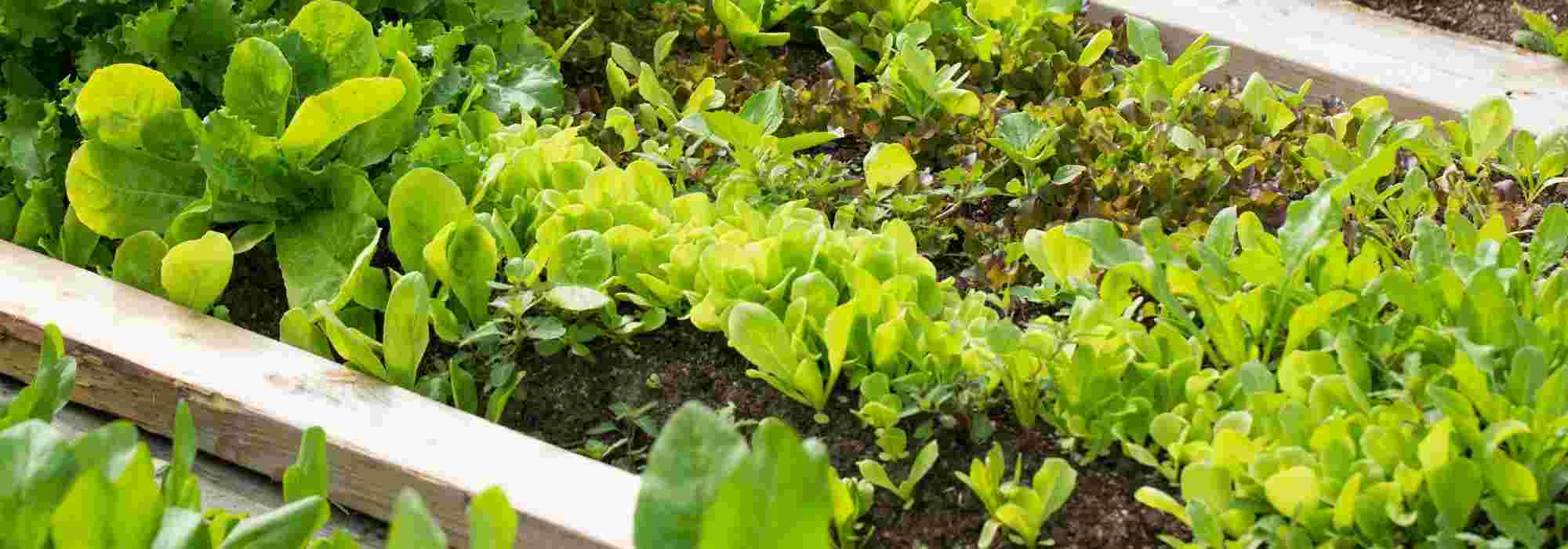
Creating a vegetable garden in stony soil
Diagnosis and Improvement Techniques
Contents
Creating a vegetable garden is always an exciting and motivating project for both novice and expert gardeners. However, conditions can vary from one garden to another. France boasts an incredible diversity of terroirs and soils. Some will be very conducive to vegetable cultivation, while others will require more effort and adjustments from the gardener. Among the more challenging soils to improve and work with, stony soils are no less difficult than heavy or sandy soils. Discover all our tips to enhance your stony plot and make the most of it.
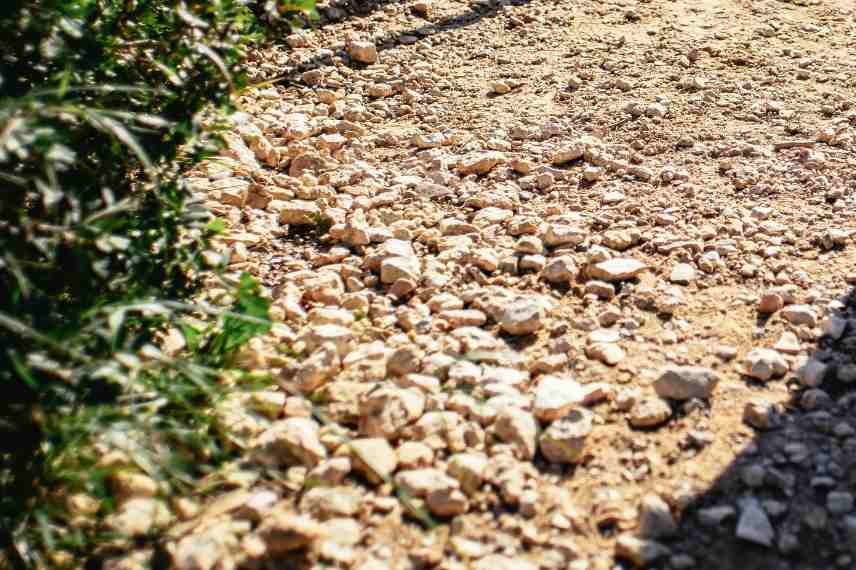
One can always improve a so-called ungrateful soil to turn it into a vegetable garden
What are the main constraints of stony soil?
Stony soils are challenging to work with and often calcareous. These properties will give you a lot of trouble regarding watering as well as the choice of plants to establish in your vegetable garden. Indeed, many vegetable plants do not appreciate excess lime and need a good amount of water to thrive and be productive. The stones will tend to drain the soil quickly and prevent the roots from establishing deeply. Nevertheless, some vegetables will find their place in this particular medium.
Stony vegetable gardens will have a worrying tendency to heat up significantly during the hottest months and dry out quickly. The stones in your soil will absorb heat and release it in the evening, further drying out the earth. Given the water needs of most vegetables and the scorching summers of recent years, one might wonder if it is wise to embark on such an endeavour under such challenging initial conditions.
Finally, a vegetable garden containing many stones and pebbles will inevitably be very difficult to work with using traditional gardening tools (spade, rake, hoe…).
However, it is possible, with a few tips and proper water management, to achieve surprising results!
What arrangements should be considered?
There are two main scenarios:
- if the soil is heavily stoned, you will need to raise it;
- if you can work it, remove the stones and cultivate directly by improving it with a massive addition of compost and a variety of organic materials.
Raising Your Vegetable Garden
When your soil is uncultivable and impenetrable by any tools, you will need to adapt by raising your vegetable garden. This is a very popular technique nowadays, used for soils that are too poor, sandy, stony, or waterlogged.
It can take the form of a raised bed, a lasagne garden, or a straw bale garden filled with various layers of organic materials.
What ingredients should you fill your frame with? Whether it is made of wood, straw bales, or a classic mound, the choice and alternation of materials will be key to your success. The goal is the same as that of compost: alternate brown (carbon-rich) and green (nitrogen-rich) materials to create a fertile substrate conducive to healthy plant growth.
By maintaining contact with the soil, you allow bacteria, fungi, earthworms, woodlice, and other microorganisms to transform your “ingredients” into compost while freeing you from stones and poor soil.
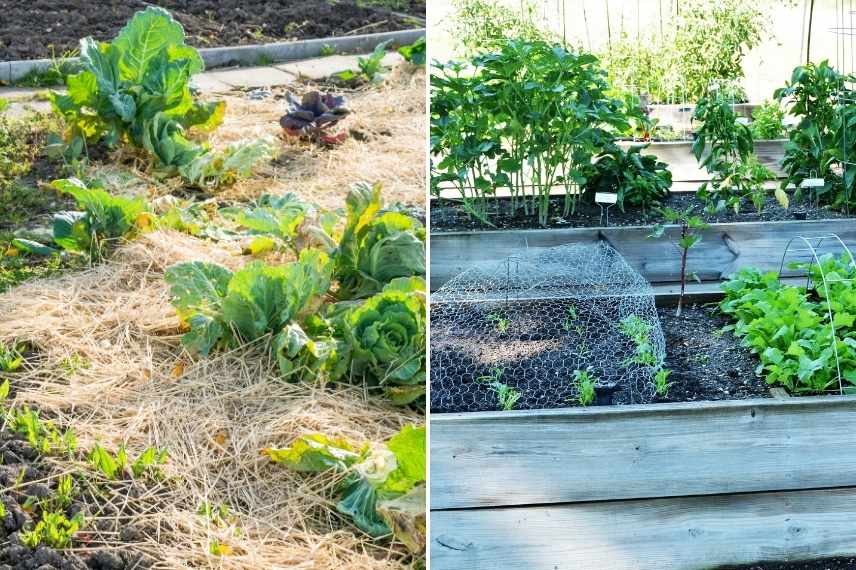 Amend and raise!
Amend and raise!
In practice:
- Set up your frame at a width of 1.20 m to allow access to the centre from all sides.
- Water the soil thoroughly before adding your various layers. Note: don’t tire yourself out trying to work the soil; unwanted weeds will be smothered by the organic matter and assimilated by the soil life, enriching it even more.
- Place a first layer of brown materials: wood chips, sawdust, cardboard, ramial chipped wood… to a height of 10 to 20 cm. Always start with a “brown” layer, as the weeds present on the ground often already form a nitrogen-rich (green) layer. Water this layer with a watering can.
- Add an equivalent height layer of green materials (grass clippings, fresh hedge trimmings, seaweed, kitchen waste, etc).
- Repeat these two steps again according to the height of your frame or, if you are nearing the edge of your structure, add a final layer with potting soil, light topsoil, or homemade compost to a height of 20 cm.
- Plant and sow your vegetable plants directly in this substrate and mulch generously to protect it from drying out.
Discover the process in our video tutorial: Create a raised bed.
After a few months, your layers will have transformed into fertile soil that will have lost a good part of its height. Its maintenance will be limited to mulching and occasionally adding a new layer of compost. This technique allows you to make use of your garden waste while growing your vegetables directly in a compost in formation, without waiting for it to be created in a corner of your garden for 6 months to a year.
From an ergonomic point of view, you will be more comfortable working and will spare your back.
The downside of raised vegetable gardens is the large quantity of organic materials needed for their establishment. It is important to remember that it is difficult to source brown materials during the beautiful season (e.g., fallen leaves, wood chips, sawdust…) just as green materials are scarce during autumn and winter.
Remove as many stones as possible and add organic matter
This second option requires more perseverance than the first but will allow you to exploit a larger cultivable area. It is only feasible if your tools can penetrate the soil despite the stones. Use a rake to collect the stones. The digging fork is the essential tool for working stony soil. There are also spades specifically designed for this purpose, such as the shark spade.
To improve your soil, you will need to cover it continuously and add large quantities of compost, manures, and organic materials to increase your soil’s water retention and enrich it.
Mulching should be present all year round to protect your soil and fertilise it continuously. To learn more about its importance and usefulness, consult our advice sheet: Mulching, why and how?
In winter, sow green manures, particularly nitrogen-fixing legumes, to loosen the soil and retain the mineral elements that are more likely to be leached in these porous soils.
Discover other Vegetable gardens
View all →Available in 0 sizes
Available in 1 sizes
Available in 1 sizes
Available in 1 sizes
Available in 1 sizes
Available in 1 sizes
Available in 1 sizes
Available in 1 sizes
Available in 1 sizes
Available in 1 sizes
Which vegetables and condiments should be prioritised for this type of soil?
Cabbages, turnips, and rutabagas will thrive in stony and chalky mediums, while asparagus, tomatoes, beetroots, parsnips, radishes, spinach, and lettuces will tolerate slightly alkaline soils.
Thyme, rosemary, summer savoury, hyssop, and oregano and wild garlic (Allium vineale) will flourish in the stony soils of your plot.
During the winter season, use green manures suitable for this type of soil: crimson clover, perennial alfalfa, winter vetch, rye, or oats.
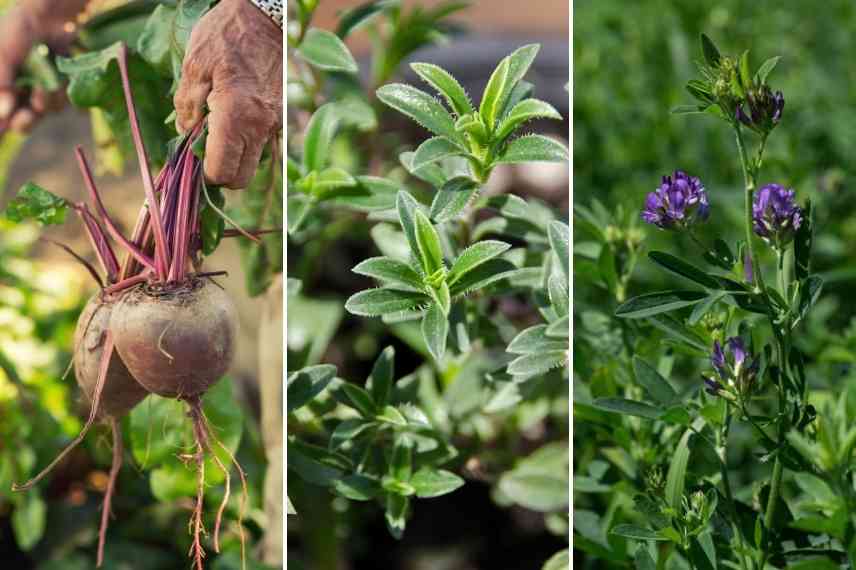
Beetroots and aromatic plants with small foliage accept chalk. Plant green manure (here alfalfa) to improve your soil.
What to do with stones extracted from the soil?
Many regions of France, such as Champagne and Brittany, are bordered by dry stone walls that farmers gradually built to make the soil more cultivable. They have thus allowed a multitude of plants and animals to make their home there while delineating their plots and containing their livestock.
If you decide to extract stones from your vegetable garden, why not do the same to attract lizards, slow-worms, and succulents that will make your gardens even more appealing? It is also possible to create a “kern” to add originality and verticality to your green space.
- Subscribe!
- Contents
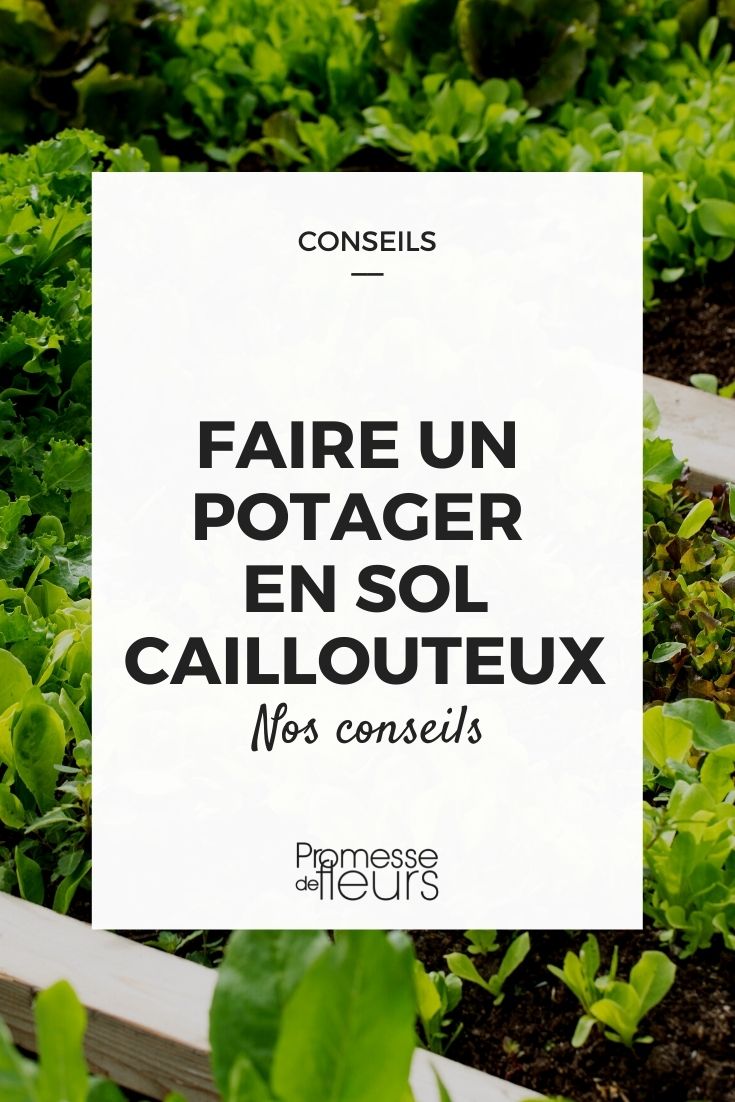

































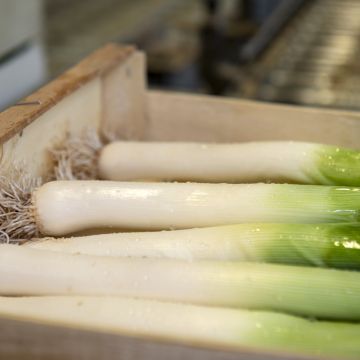

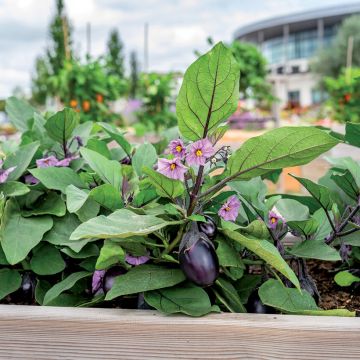

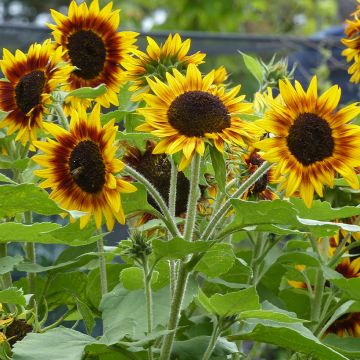


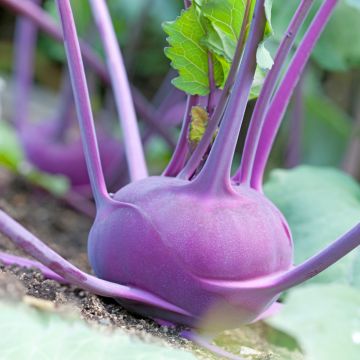
Comments